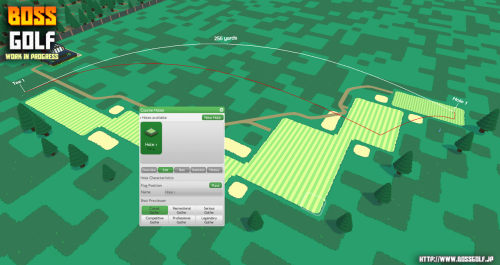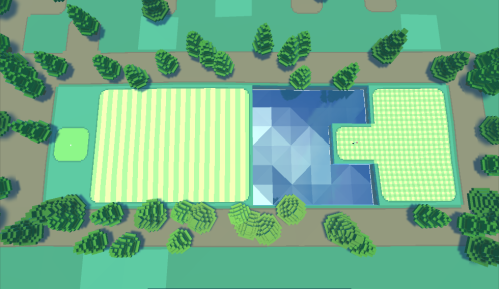Hello folks!
Took some time, but it is here, the update 0.65 for Boss Golf closed alpha!

Changelist for this version includes:
- Fixed issue where golfers couldn’t acquire an open hole if the number of open holes was less than the number of available holes.
- Added a radar display for overview of the golfer abilities.
- Separated golfers into rankings: Casual, Recreational, Serious, Competitive, Professional, and Legend. Rankings determine the starting ability of the golfers. After a lot of play, once their attributes increase, they may achieve a higher rank. This system will tie in with the “perks” system that I described some time ago.
- Added proper calculations for draw, fade, hook, push, pull, and pure. Now when golfers hit the ball, based on their attributes, there’s a chance for either of these forces to be added to the golfer. Includes your own golfer! (Right now no way to increase it, so bear with it)
- Added golfer dominant hand, now you’ll see golfers taking a stance according to their main hand.
- Increased variety of golfer thoughts and improved the display of the thoughts in the character panel. Added more thoughts for analyzing the results of a hole playthrough.
- Improved calculations for stroke generation to give golfers better/more realistic options. There’s still some issues with some edge cases, since we can’t set OB areas yet. Once that’s in, it should be more accurate.
- Added a display for the state of the hole (open or closed).
- Added a panel showcasing the statistics of the hole (average score, number of plays etc).
- Added a panel showing a history of plays on that hole with the ability to see the shots. Simply click the play you’d like to see, and it will be shown. Golfers also keep a memory of their playthrough at any given hole.
- Added shot evaluation buttons based on golfer ranking. In the Edit panel of the Hole panel, you can click on the button for each golfer ranking, and see more or less the average path they will take. Works with multiple tees as well.
- Closing a hole will now make the AI abandon the current hole, if they are queuing for it or playing it. May lead to bad thoughts 😉 (The player will never be booted)
- Fixed issue with golfers roaming outside the resort grounds.
- Tweaked the graphics of the terrain by adding some better boundary effects. Still heavily work in progress.
- Increased the size of the character collider to make it easier to click them.
- Added snapping option for decorations. On the decoration selection, you’ll see a little magnet button that you can toggle to snap the decoration. It’ll snap on a 1 meter grid.
- Tweaked speeds for detecting when the ball successfully enters the hole.
Phew! That’s it for 0.65. Now onwards to 0.66. And also might have some bigger news to share soon!
Enjoy!







